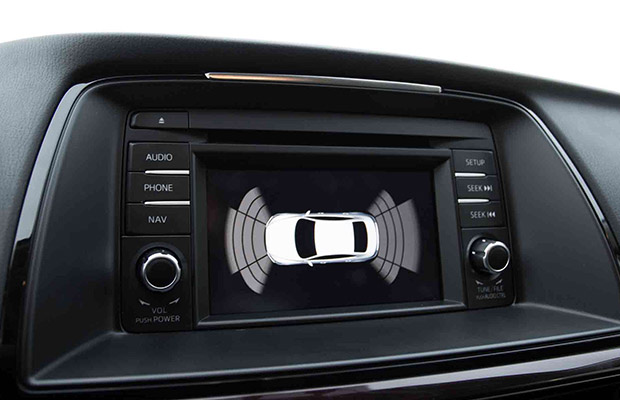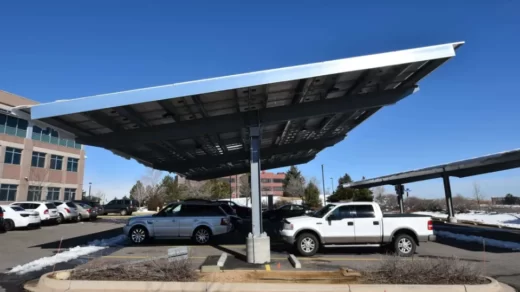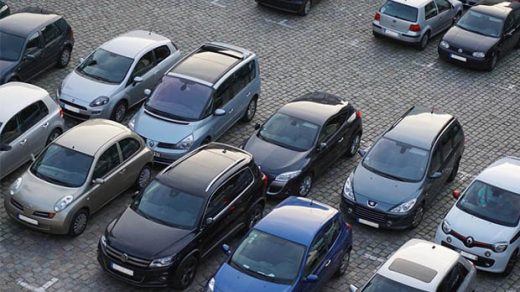Many automakers have started integrating a parking sensor feature into their vehicles to make it simpler for drivers to park.
What are parking sensors? The parking sensor also called “parking aid”, is mainly composed of ultrasonic sensors, controllers, and displays. It helps the driver “see” the invisible things in the rearview mirror, and inform the driver of the obstacles around the driver by sound or a more intuitive display.
Because it will warn you if there are objects or other cars behind you, this technology is very helpful for making parking easier. The car’s parking sensor technology is what exactly? Let’s look at the following article for a detailed explanation of what a parking sensor is, its different types, and how it functions.
Table of Contents
What Are Parking Sensors?
The parking sensor also called “parking aid”, is mainly composed of ultrasonic sensors, controllers, and displays. It helps the driver “see” the invisible things in the rearview mirror, and informs the driver of the obstacles around the driver by sound or a more intuitive display. The parking sensor helps the driver to eliminate the flaws of blind spots and blurred vision by removing the trouble caused by the driver’s front, rear, left, and right visits when parking, reversing and starting the vehicle. Additionally, the parking sensor has some blind spots, such as ridges and obstacles that are too low and thin.
Read More: What Are Proximity Sensors?
How Does Car Parking Sensor Work?
The basic operation of parking sensors is very straightforward. When parking the car, sensors on the rear bumper of the vehicle will measure the space between the rear bumper and any obstructions or objects. There are two separate circuits that make up the parking sensor itself. The transmitter is one component, and the receiver is the other.
When ultrasonic waves are reflected back by nearby objects, the transmitter will send more waves, which is how this sensor operates. Additionally, this reflection will be heard and reissued as sound, serving as a warning to the driver. From a distance of 1.5 meters, parking sensors can detect objects. However, the positioning and quantity of sensors that are installed on the vehicle affect its accuracy.

Parking Sensor Types
When a car wants to reverse or park, the reverse parking sensor acts as a warning device when it detects another vehicle or object behind. The user is typically given a warning in the form of an alarm sound.
Currently, cars typically use one of two types of parking sensors. Infrared parking sensors and ultrasonic parking sensors are the two varieties.
1. Electromagnetic Parking Sensor
The newest cars frequently use electromagnetic parking sensors as their type of parking sensor. The electromagnetic waves that are emitted from this kind of parking sensor have the appearance of a blanket. This sensor can identify any vehicles or objects that may be in close proximity to the body of your vehicle.
2. Ultrasonic Parking Sensor
This particular parking sensor is typically mounted on the vehicle’s rear bumper using four to six sensors. This reverse sensor works by emitting ultrasonic waves, and if a foreign object is detected within the ultrasonic sensor’s reflection range, the ultrasonic wave will be reflected.
In reality, the operation of these two varieties of parking sensors is very similar. The distinction lies in the waves that are emitted, specifically the electromagnetic waves and ultrasonic waves. The parking sensor will automatically turn on when the transmission is in R gear or the car is in reverse.
Basic Components Of Parking Sensors
When the car is parking or backing up, the parking sensor serves as an additional safety feature. In order to make parking, reversing, and starting the car less difficult, it can alert the driver to obstacles around them using sound or a more user-friendly display. Blurred vision and blind spots are both made obsolete for the driver. Ultrasonic sensors, controllers, displays, buzzers, etc. make up the majority of the parking sensor.
1. Ultrasonic Sensor
The ultrasonic sensor’s primary job is to transmit and receive ultrasonic signals, input those signals into the host, and display those signals on the display device.
The ultrasonic sensor’s piezoelectric sheet vibrates in response to an electrical signal from the controller, producing ultrasonic waves. The circular piezoelectric sheet’s structure gives the emitted ultrasonic waves some directivity, and the beam section resembles an ellipse, which limits the ultrasonic sensor’s detection range. As shown in Figure 2, the detection angle is typically 120 degrees for the horizontal plane and 60 degrees for the vertical plane.
A transmitter-receiver integrated sensor is frequently used, which means that the same ultrasonic sensor is used for both transmitting and receiving ultrasonic waves.
2. Controller
In order to determine the distance and orientation between the vehicle body and the obstacle, the controller analyzes the signal. The controller sends a sine wave pulse to the sensor, interprets the signal it receives, calculates the corresponding distance, and then sends a signal to the display. The controller’s primary jobs are to calculate and filter. Although the controllers of various parking sensor system brands may differ, the fundamental concepts are the same.
In cars, the controller is typically installed around the dashboard, while the ultrasonic sensor is mounted to the front and rear bumpers and sends signals over long wires. The controller must filter the noises created by the long line because they will unavoidably occur. The ultrasonic sensor’s beam is directional with an approximately elliptical cross-section rather than being regular. The beam will unavoidably make some mistakes while going through the process. For example, the ultrasonic sensor may occasionally “sweep the floor” (when there is no obstacle behind the car, it always detects a fixed distance between 40-60cm, that is, the distance between the ultrasonic sensor and the ground). In order to ensure that the system has enough sensitivity while avoiding false alarms, the control circuit will, in practice, use technical means to process the echo signal of the ultrasonic sensor.
3. Display Or Buzzer
The system will alert the driver by buzzing and displaying an alarm on the display when the sensor determines that the distance between the vehicle and the obstacle has grown dangerously close. According to the distance, the display plays a corresponding distance alarm.
Pros And Cons Of Parking Sensor
Pros
The following are some benefits of using a parking sensor.
- As a result of this system, parking fatigue is reduced.
- Parking in tight spaces becomes easier when the invisible area around the vehicle is reduced.
- Injuries to the car or other nearby objects are less likely when there is a better view of the area after the vehicle.
Cons
The following are the main restrictions of this sensor.
- It is challenging to find vertical or flat objects in very thin materials.
- When the surface is covered with snow cling or mud then the sensor fails in detecting the object
Tips For Using Parking Sensor
- Don’t entirely rely on your parking sensors to detect everything in your path of parking. They might not pick up on objects that are flat on the ground, below the bumper, too near or too far from the car.
- Verify that the bumpers’ sensors are free of any impediments, such as snow or dirt.
- While parking, be mindful of anything or anyone that might stray into the parking path.
Car Sensor Maintenance
Your car’s parking sensor needs to be properly maintained in order to work at its best. To care for car sensors, there are several things you need to pay attention to, including:
1. Keep It Clean
By keeping them clean at all times, you can make sure that the car parking sensors are working properly. When detecting objects behind the car when parking, a car sensor that is covered in dust or dirt will have trouble performing its duties.
It’s not difficult to clean the parking sensor. To get rid of the dirt that is covering it, just spray it with water and wipe it down. To prevent damaging the camera sensor, use a soft cloth.
2. Do Not Paint
The parking sensor camera on the car’s bumper is sometimes painted by car owners who make modifications to their vehicles. Since they can impair the functionality of a car’s sensors, errors like these need to be avoided.
When using this kind of parking sensor with ultrasonic waves, painting the sensor can harm the wave mechanism. The functioning of the parking sensors is consequently not ideal for assisting the driver in parking the vehicle.
Parking sensor technology is currently present in almost all types of modern automobiles. One illustration is the New Cortez vehicle, which has a rear parking camera feature with steering instructions. You can park more safely and comfortably thanks to this feature’s use of the best sensors.
Read More: Angle Parking & Perpendicular Parking



